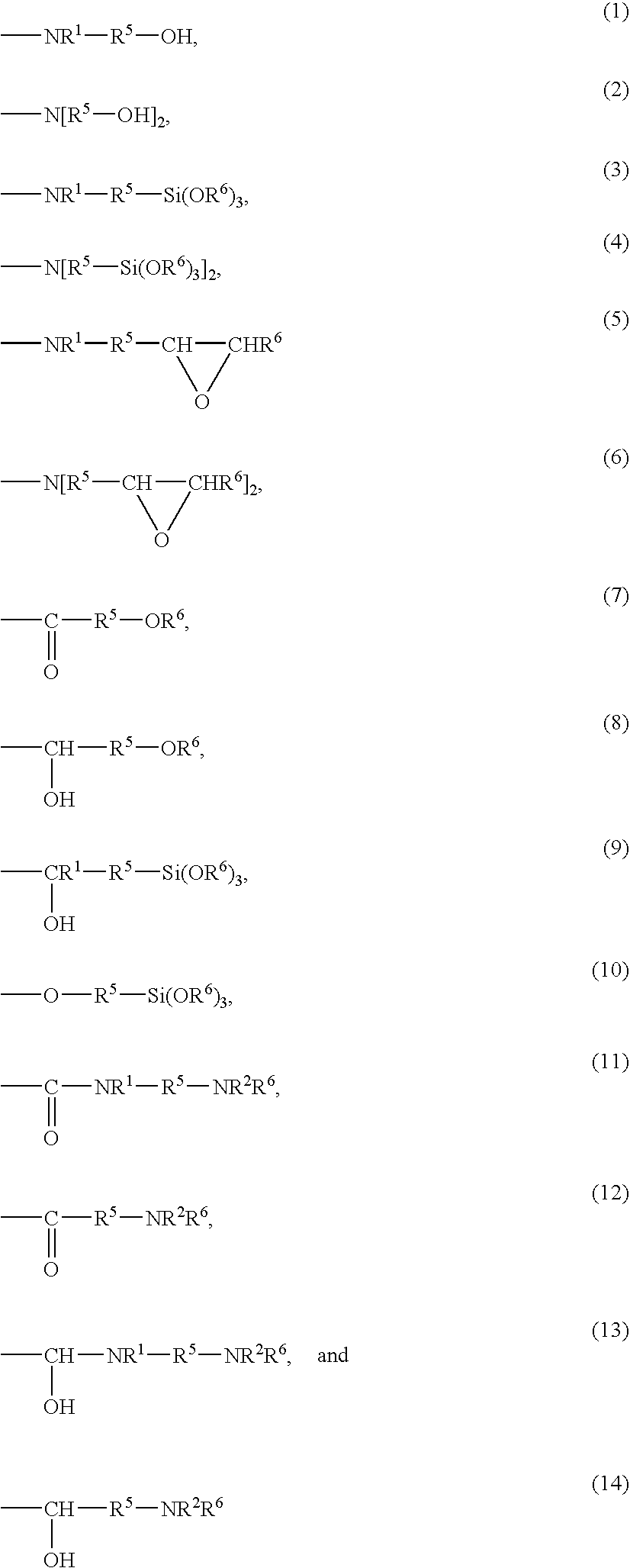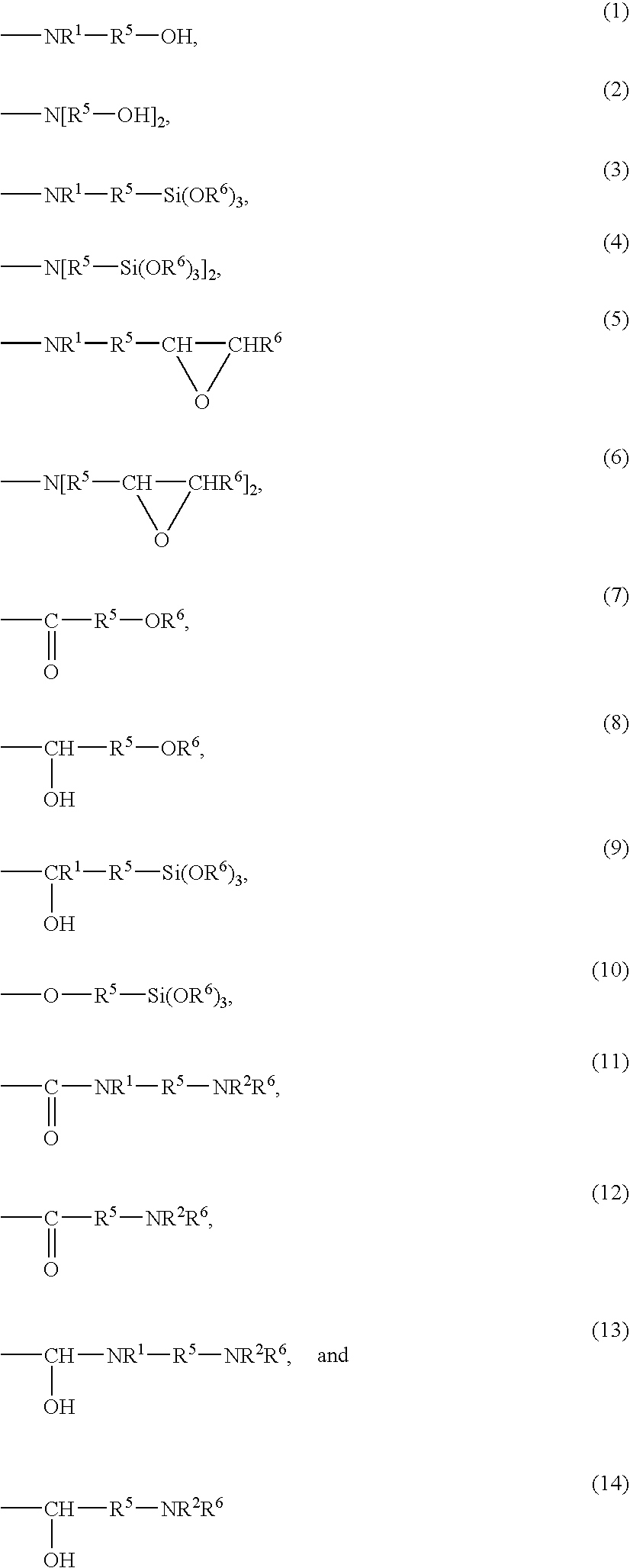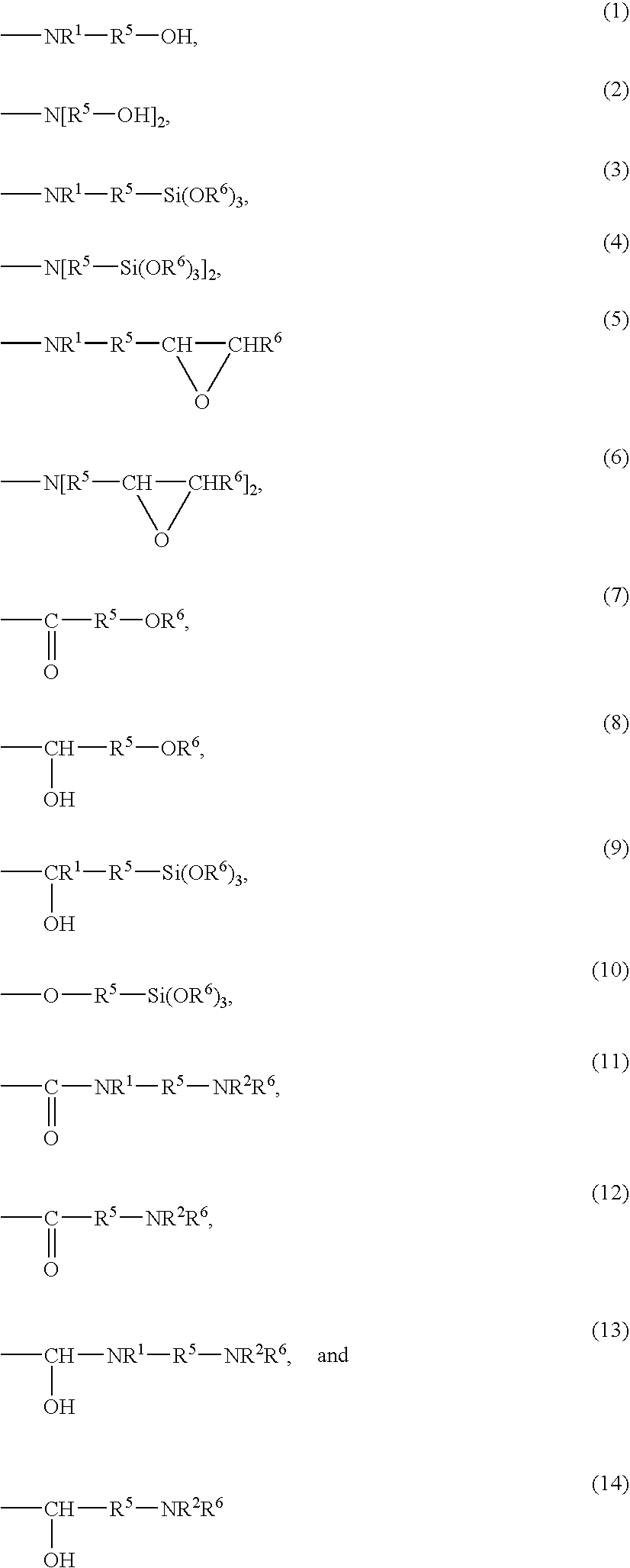Hydrogenated copolymer and composition thereof
a copolymer and hydrophilic technology, applied in the field of hydrophilic copolymers, can solve the problems of disadvantages of above-mentioned block copolymers, difficult to broaden the use range of such a block copolymer, copolymer poor abrasion resistance, etc., and achieve excellent properties with respect to flexibility, tensile strength crosslinkability, anti-impact scratch property, adhesion properties and crosslink
- Summary
- Abstract
- Description
- Claims
- Application Information
AI Technical Summary
Benefits of technology
Problems solved by technology
Method used
Image
Examples
reference example 1
Preparation of Hydrogenation Catalyst I
[0367] A reaction vessel was purged with nitrogen. To the reaction vessel was fed one liter of dried, purified cyclohexane, followed by addition of 100 mmol of bis(η5 -cyclopentadienyl)titanium dichloride. While thoroughly stirring the resultant mixture in the reaction vessel, an n-hexane solution of 200 mmol of trimethylaluminum was fed to the reaction vessel, and a reaction was performed at room temperature for about 3 days to thereby obtain hydrogenation catalyst I (which contained titanium).
reference example 2
Preparation of Hydrogenation Catalyst II
[0368] A reaction vessel was purged with nitrogen. To the reaction vessel was fed two liters of dried, purified cyclohexane, followed by addition of 40 mmol of bis(η5-cyclopentadienyl)titanium di(p-tolyl) and 150 g of 1,2-polybutadiene having a molecular weight of about 1,000 and a 1,2-vinyl bond content of about 85%. To the resultant solution was added a cyclohexane solution containing 60 mmol of n-butyllithium, and a reaction was performed at room temperature for 5 minutes. To the resultant reaction mixture was immediately added 40 mmol of n-butanol, followed by stirring, thereby obtaining hydrogenation catalyst II.
example 1
[0369] An unhydrogenated copolymer was produced by performing a continuous polymerization by the following method in which there were used two reaction vessels (i.e., a first reaction vessel and a second reaction vessel), each of which had an internal volume of 10 liters and was equipped with a stirrer and a jacket.
[0370] A cyclohexane solution of butadiene (butadiene concentration: 24% by weight), and a cyclohexane solution of n-butyllithium (which contained 0.110% by weight of n-butyllithium, based on the total weight of the monomers (i.e., the total weight of the butadiene fed to the two reaction vessels and the styrene fed to the second reaction vessel)) were fed to the bottom portion of the first reaction vessel at feeding rates of 2.06 liters / hr and 1.3 liters / hr, respectively, while feeding a cyclohexane solution of N,N,N′,N′-tetramethylethylenediamine (TMEDA) to the bottom portion of the first reaction vessel at a feeding rate such that the amount of the TMEDA was 0.08 mol ...
PUM
| Property | Measurement | Unit |
|---|---|---|
| Temperature | aaaaa | aaaaa |
| Temperature | aaaaa | aaaaa |
| Fraction | aaaaa | aaaaa |
Abstract
Description
Claims
Application Information
 Login to View More
Login to View More - R&D
- Intellectual Property
- Life Sciences
- Materials
- Tech Scout
- Unparalleled Data Quality
- Higher Quality Content
- 60% Fewer Hallucinations
Browse by: Latest US Patents, China's latest patents, Technical Efficacy Thesaurus, Application Domain, Technology Topic, Popular Technical Reports.
© 2025 PatSnap. All rights reserved.Legal|Privacy policy|Modern Slavery Act Transparency Statement|Sitemap|About US| Contact US: help@patsnap.com



